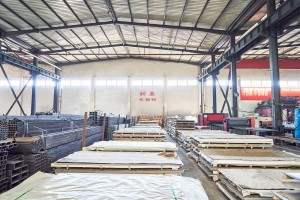First, we need to understand the chemical composition and physical properties of 201 stainless steel plates. 201 stainless steel plate is an alloy material containing 17% to 19% chromium, 4% to 6% nickel and 0.15% to 0.25% low carbon steel. This alloy material has excellent corrosion resistance and high temperature performance, and can be used for a long time in high temperature and corrosive environments. In addition, 201 stainless steel plate also has good processability and strength, which can meet the needs of various industrial applications.
Secondly, we need to understand the high temperature performance of 201 stainless steel plate. According to relevant research, the high temperature performance of 201 stainless steel plate depends on its chromium content and carbon content. When the chromium content is higher than 10.5%, stainless steel has good high temperature resistance and can be used for a long time in a high temperature environment. The lower the carbon content, the better the high temperature performance of stainless steel. Therefore, the high temperature performance of 201 stainless steel plate depends on its specific chemical composition and manufacturing process.
Finally, we need to understand the high temperature performance of 201 stainless steel plate in practical applications. According to relevant experiments and application experience, 201 stainless steel plate can be used for a long time in a high temperature environment below 500 ℃, and its performance will gradually decline in a high temperature environment above 500 ℃. Therefore, when using 201 stainless steel plates in high temperature environments, it is necessary to select and design according to specific application requirements and environmental conditions.
To sum up, 201 stainless steel plate is a stainless steel material with excellent high temperature resistance. Its high temperature resistance depends on its specific chemical composition and manufacturing process, and it can generally be used for a long time in a high temperature environment below 500 °C. In practical applications, it needs to be selected and designed according to specific application requirements and environmental conditions to ensure its high temperature performance and service life.
For More info, you can contact: http://wa.me./8613306748070
Post time: May-11-2023
